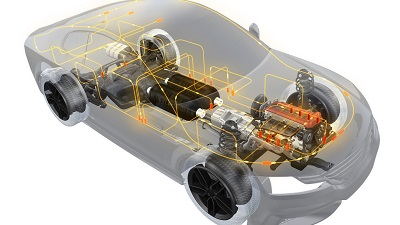DSM has introduced a material solution for high-pressure composite tanks for hydrogen storage in its continuing mission to help reduce CO2 emissions.
Hydrogen tanks are the next step in fuel storage, as such storage is a key enabling technology for advancing hydrogen and fuel cell technologies in applications that include stationary power, portable power and transportation.
Hydrogen has the highest energy per mass of any fuel. One kg of hydrogen is equivalent to 33.3 kWh, which means it delivers three times more energy than conventional fuel. But hydrogen’s low ambient temperature density results in a low energy per unit volume. This requires the development of advanced storage methods that have the potential for higher energy density.
DSM is working to apply its materials expertise to make safe, effective and very lightweight hydrogen tanks. “We had already developed this technology for compressed natural gas (CNG) tanks, and now we are testing the same material and design principles for hydrogen tanks to meet the needs of the automotive industry,” said Bert Keestra, Application Development Engineer at DSM.

The two-part tank design features a proven, blow molded liner made of Akulon® Fuel Lock, a polyamide 6-based engineering plastic with a very high barrier to hydrocarbons. The tank can then potentially be further reinforced by wrapping it in unidirectional (UD) continuous fiber-reinforced thermoplastic tapes made of EcoPaXX® polyamide 410. This combination of commercially available materials has already proven to be very effective in CNG tanks, and DSM is now actively testing the concept in hydrogen tanks.
The result would be the lightest-weight plastic tank available for hydrogen storage applications. Reducing weight is key, since every 10 kg removed from a vehicle roughly translates into a reduction in CO2 emissions from the vehicle on the road of one gram per km.
For the liner, Akulon Fuel Lock greatly reduces weight compared to metal. It also offers improved permeation versus polyolefin liners, meaning that the gas stays in the tank. The liner material, which is 100% recyclable, is safe with no debuckling.
Nike Jordan Super Fly 4













